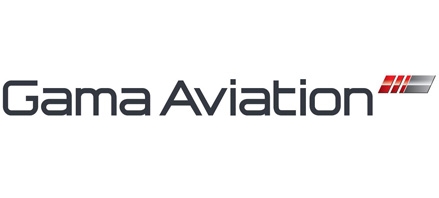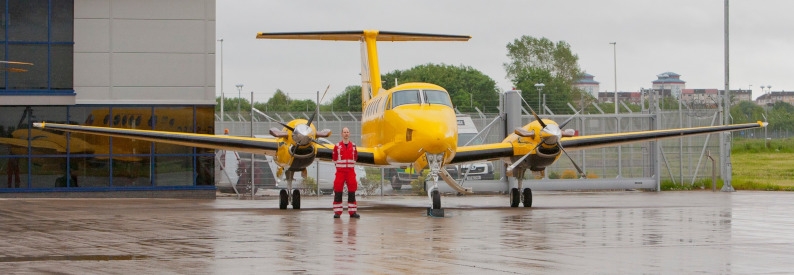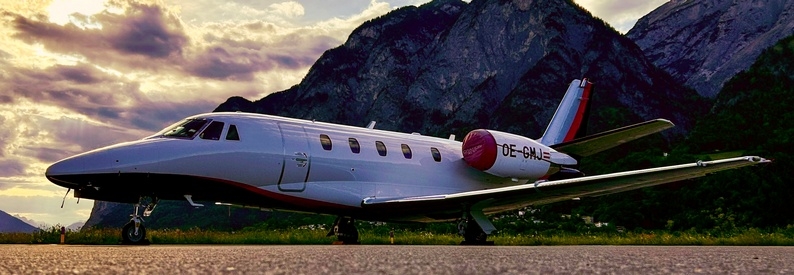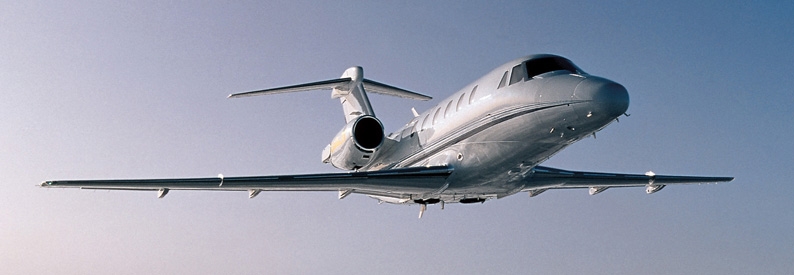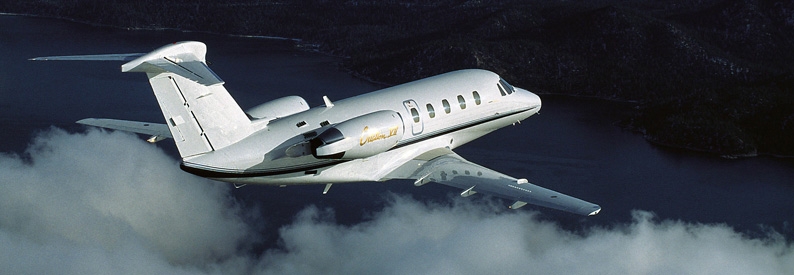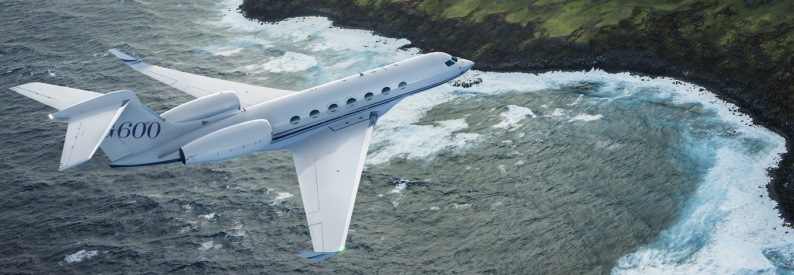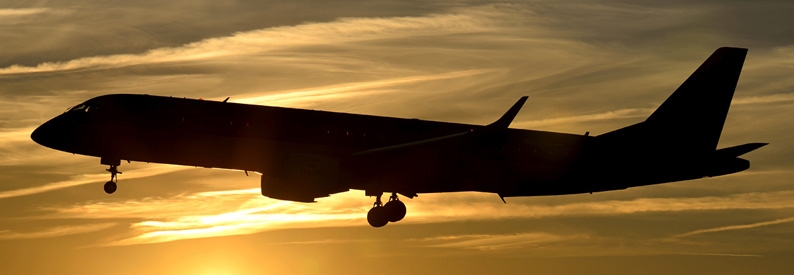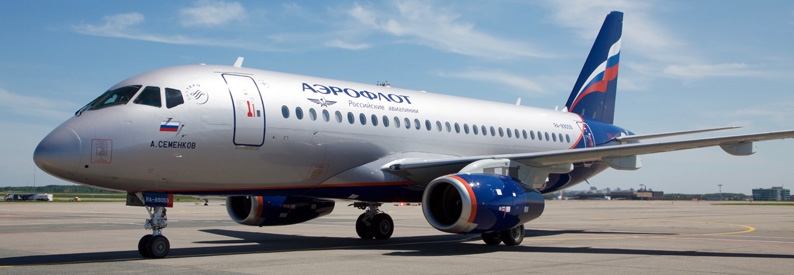Gama Aviation (GMA, Farnborough) is planning to expand its global fleet to around 40-50 aircraft, Managing Director of Aircraft Management and Charter Graham Williamson told ch-aviation in an exclusive interview. The operator wants to retain its boutique approach, and sees the recent acquisition of two European AOCs - Tyrolean Jet & Service and TJS Malta - as important to this strategy.
Williamson said the acquisition of Tyrolean was a natural fit for Gama Aviation, complementing the company’s global aircraft management operations.
“The principal driver for us was the fact that Gama Aviation did not have a European AOC,” he explained. The Tyrolean brand itself was important, but the real attraction lay in the dual Austrian and Maltese AOCs. “For my part of the business, which is aircraft management and charter, we’re very, very focused now on bringing aircraft onto both Austrian and Maltese registration.”
In addition to the strategic value of these AOCs, the acquisition brought operational advantages. “Tyrolean represents a broad footprint in Innsbruck,” Williamson said. “We were able to acquire the offices, a fixed-base operation (FBO) facility, and a hangar where the company runs a Part 145 business. This complements our existing network of FBOs and maintenance, repair, and overhaul (MRO) facilities.”
EASA AOC ambitions
With the acquisition of Tyrolean, Gama Aviation now holds commercial AOCs in Austria, the Cayman Islands, Malta, the United Kingdom, and the United Arab Emirates, along with private operations with Maltese and Bermudan registrations. “This offers our customers private and commercial solutions across almost every jurisdiction,” Williamson said.
Asked about the potential for new AOCs, he noted that these decisions are driven by customer demand. “We need to move beyond the notion that a European-registered aircraft is only for Europe. There are many successful Maltese-registered aircraft operating in the Middle East, and I believe the Cayman Island can offer many of the same benefits as San Marino.”
Gama Aviation’s strategy for expanding and operating across different AOCs partly relies on having dual postholders across jurisdictions. “Staff costs are the main cost driver, so having experienced personnel who can serve multiple roles across AOCs helps reduce operational costs,” Williamson explained. “For example, a seasoned training captain can also act as a postholder, which allows us to benefit from having multiple AOCs by bringing in a wider range of experienced professionals.”
However, he acknowledged that this approach may not be scalable in the long term, necessitating the development of a more robust European footprint. “One thing we’re evaluating is the potential of an EASA AOC that consolidates European registrations under a single set of regulations,” he said. Currently, only two operators hold an EASA AOC, and only one is a private jet operator, Luxaviation Portugal. "I’d love to be the next one if we could, but there's a bit of work to be done."
Expansion with a boutique approach
Currently managing around 20 business jets, Gama Aviation’s fleet spans from lighter jets like the Citation Mustang to ultra-long-range aircraft such as two of the three managed aircraft recently transitioned to the Maltese register, the Gulfstream Aerospace G650 and the Global Express. By the end of 2025, Gama plans to expand the fleet to 30 aircraft, with long-term growth targeting 40 to 50 aircraft by 2028.
Williamson said that despite the growth plans, Gama is focused on keeping its “boutique” approach. “The boutique element is crucial to us. We want to maintain a personalised experience even as the fleet expands,” he emphasised.
“The way I’m approaching it is to say I don’t want 50 aircraft. I want five lots of 10. I want five boutiques,” he continued. “One may be in Malta, another in Austria, but that doesn’t mean they’re all under the Austrian AOC. It’s about having five localised boutiques based on culture and product, not regulation.” He added that clients expect a high level of service regardless of the local AOC. "We aim to build relationships that last 15 or 20 years. The aircraft may change, but the management company doesn’t.”
The operator’s “boutique” strategy involves local operations adjusted to its customers’ needs, not just local AOCs. It has a lot of demand in Milan and Nice and bases aircraft out of these regions but using a mix of existing certificates and the prospective EASA one.
Juggling high demand for aircraft, its growth plans, and current supply chain constraints, the operator is looking for alternative solutions. “One of the reasons we'll probably redeploy a Citation XLS is to provide interim solutions for people waiting for new aircraft,” Williamson said.
He revealed the operator would help to deliver two or three new Citation Latitudes in 2025 and already has aircraft in the delivery pipeline for 2026. To ensure smooth induction into service, Gama is actively trying to space out deliveries and appreciates customers who make decisions ahead of time. However, it is also prepared to work with customers who need quick solutions.
“We aim to avoid a scenario where numerous aircraft are delivered simultaneously,” Williamson said. “The best clients are those who plan ahead and allow us time to prepare, including helping them with aircraft specifications, crew selection, and training.”
Charter and aircraft management balance
Historically, Gama Aviation operated a number of company-owned aircraft for charter and intends to develop in-house capacity along with some managed aircraft seeking third-party charter revenue. “We need more charter-capable aircraft,” Williamson conceded, highlighting this as an increasingly important aspect of Gama’s business. The company’s charter fleet includes a variety of aircraft, such as a Citation Jet 1+ and two Citation Jet 2s along with a Citation XLS inherited from Tyrolean Jet & Service. Gama also manages aircraft that are made available for third parties, such as the Challenger 605, Falcon 7X, Legacy 600, and Global Express. He added that charter aircraft are often used to generate revenue when aircraft are not in use by the owner.
To meet growing demand, Gama is focusing on attracting more larger-cabin aircraft from Airbus, Embraer, and Bombardier Business Aircraft to support its specialist charter clients and brokers that focus on music tours and sports teams. A balanced portfolio across different aircraft sizes is important. “Many clients want to ensure that charter aircraft are fit for their intended purpose,” Williamson explained. "If we have smaller-cabin aircraft, they're more than happy to use them and save their long-range aircraft for their designed purpose. The larger the aircraft, the greater the opportunity it creates, but we have to make sure that the fleet provides the solutions that are tailored to suit all of our clients' needs."
Middle East market, Sharjah FBO
Following its long-running fixed-base operators (FBOs) in Glasgow International and Jersey, where the company is adding new hangars, and the recent acquisition of Tyrolean's Innsbruck facility, Gama Aviation has invested in a new FBO in Sharjah, scheduled to open in 2025, and another in Jersey, Channel Islands which will break ground in the same year. Gama Aviation’s FBO network also includes its third location in Glasgow International. This reflects the operator’s focus on the Middle East as an increasingly important market.
The new facility will feature a 12,000-square-metre hangar capable of parking up to 20 large-cabin aircraft, in addition to a brand new FBO facility and line maintenance station, aligning with the company’s boutique strategy. “We strongly believe Sharjah is one of the key future gateways in the region, serving as a springboard to the Far East, Africa, and Europe,” Williamson remarked. Sharjah is also an attractive location to serve Dubai given the increasing congestion at Dubai International due to the reduction of slots available to business jets. It is closer geographically to much of the central business district than Dubai World Central.
One of the key advantages of Gama Aviation’s business model, according to Williamson, is the synergy between various divisions, including aircraft management and charter services, MRO, FBOs, and special missions. Special missions cover a broad range of operations, including air ambulance, military, police surveillance, uncrewed aerial systems (UAS), and offshore. Williamson noted that with future mergers and acquisitions in the pipeline, Gama Aviation aims not only to expand business aviation services but also to extend the special mission capabilities to other regions.
